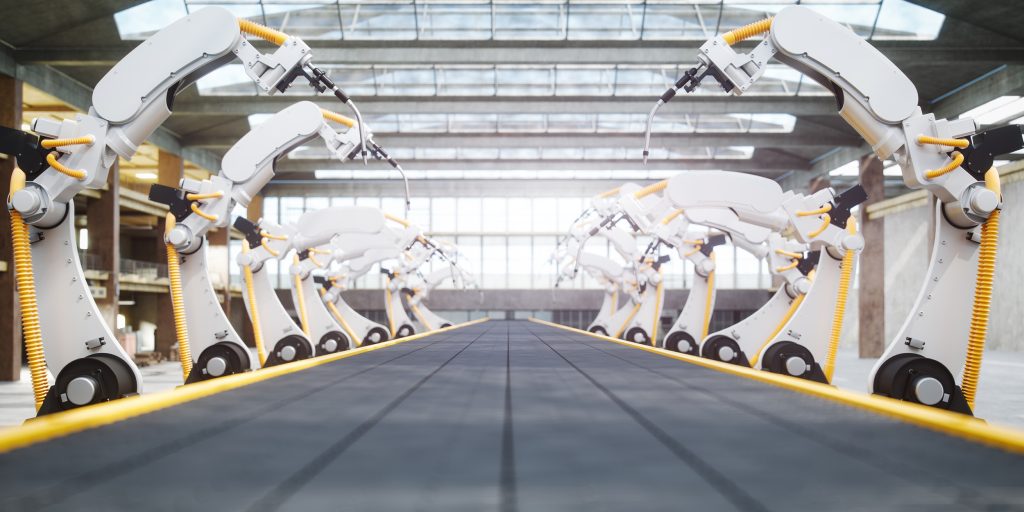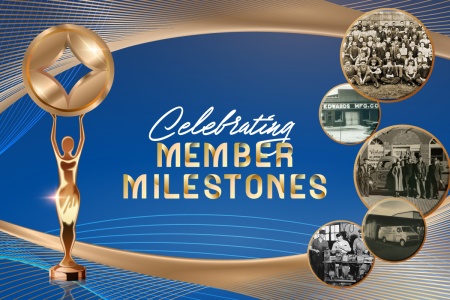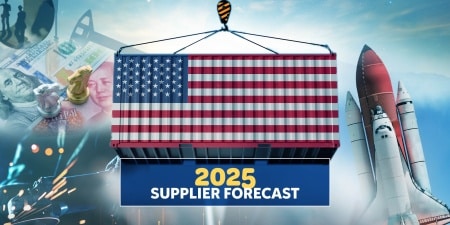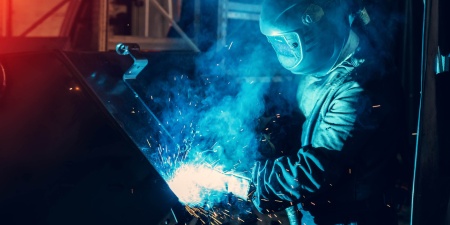Resilient, Positive, and Increasingly Automated
By Gary Konarska, Executive Director and CEO of the American Welding Society (AWS)
If the attendance and attitude at FABTECH 2022 is an indication of what to expect in 2023, the U.S. welding industry has a strong outlook despite a muted economic forecast.
FABTECH 2022, held Nov. 8 – 10 in Atlanta, had a positive vibe among the approximately 30,000 attendees. Just like you can physically feel arc characteristics when welding, visitors felt a palpable energy and excitement at the show. Every person to whom I spoke had a positive experience, welcoming the opportunity to connect and interact directly with their peers at our industry’s largest in-person event. Over the last three years, a lot of people in the welding industry developed strong associations with each other online; Atlanta offered many of them the first opportunity to turn those affiliations into in-person friendships.
From a FABTECH attendance perspective, the Welding and Welding Automation Pavilions in C Hall and part of B Hall had perhaps the most consistent and busiest floor traffic because of the massive amount of automation and digital technologies. The most visible example was the number of cobots (and tooling and accessories) on display from traditional welding companies, established automation providers and start-up companies.
I’d be remiss if I didn’t also mention the amount of Professional Development Hours (PDHs) and Continuing Education Units (CEUs) available at FABTECH as part of the AWS Educational Events. In addition to the sheer magnitude of products and services offered through the show exhibitors, the ability to gain PDHs and CEUs at the show provides a solid cost justification for attending. For example, distributor personnel could have benefitted from participating in Tuesday’s seminars in the Welding Productivity Track on cobots, automation and understanding welding economics, productivity limitations and how to overcome them. These subjects are so important to our industry in 2023 that I am going to expand on them a little bit more.
Economic Context
With the growth of cobots and more user-friendly pre-engineered robotic cells, I feel confident in saying that automation has reached a tipping point. To fully appreciate the far-reaching implications of technology “beyond the arc,” first consider the convergence of several factors taking place right now.
I have talked with a number of manufacturers who see a robust sales cycle continuing until Q2 2023, but uncertainty beyond that. Experts, such as JPMorgan Chase, predict a mild recession beginning in late 2023. The company sees “increased spending related to infrastructure and the CHIPS and Science Act offset by reduced pandemic-related outlays. We see business investment up 3% in 2023, with solid spending on equipment and technology partly offset by lower spending on buildings, plants and structures.”
Deloitte projections based on Oxford Economics’ Global Economic Model anticipate 2.5% growth in GDP in manufacturing in 2023. After 29 consecutive months of growth, the November Manufacturing Purchasing Managers Index registered 49% and dropped to 48.4 in December. This marks the first time the manufacturing sector contracted since May 2020. However, the labor market remains strong, with manufacturing employment increasing by 8,000 in December.
In typical times, these indicators might signal flat to slight down sales of welding equipment, but we live in anything but typical times. First, supply chain disruptions aren’t going anywhere. To buttress operations against the inevitable disruptions, there is more re-shoring of operations and sourcing of fabricated components closer to their point of use. This means that U.S. fabricators who can compete effectively have new opportunities for growth (as a side note, The Reshoring Initiative offers good guidance on how to make the business case for selling against overseas competitors).
Note that re-shoring does not mean bringing jobs back here and performing them the same way they do overseas. We cannot compete on low-cost labor. We can’t even find enough skilled labor to meet demand — and here’s where we bring the conversation back to automation and digital technology, which enable us to work more efficiently and intelligently.
The Game Changers
Cobots are a game-changer for high-mix, low-volume applications in welding, plasma cutting and post-weld grinding/deburring. They are so easy to set-up and operate (often with smart phone or tablet-like simplicity) that they can arrive on a pallet in the morning and you can be making good parts by the afternoon (as proof points, see these cobot welding videos from Vectis Automation, FANUC and Acieta; these companies shared their wisdom in an automation panel discussion I moderated at FABTECH).
Cobots further flip the automation conversation because a critical mass of parts is no longer necessary to justify the cost of tooling (good tooling makes or breaks a standard robotic cell). Now, with a limited amount of modular tooling and a cobot on a cart, fabricators can profitably weld short runs of selected parts.
I say selected parts because the tasks best suited for cobots are the “boring” parts. If you spot an operator sitting at a bench and loading a few pieces into a basic fixture, that’s likely a good opportunity for you to recommend a cobot and help the customer achieve a quick win. This strategy lets a fabricator deploy their skilled labor on more challenging tasks while a cobot does boring, repetitive work at 2X to 4X the productivity rate of semi-automatic GMAW.
Addressing the Talent Gap
Cobots and robots also make manufacturing cool. Running an automated manufacturing cell is a challenge the younger generation can buy into. Automation also helps attract people who want to alleviate the physical tolls of welding, flex their mind more than their muscles and attract a more diverse talent pool. So does using data analytics applications, welding software and cutting automation. Telling young, relatively inexperienced people that their jobs involve computers, nesting software, CNC controllers or robots enables them to impact a business in a short time frame compared to the years it can take to master welding.
Speaking of changing the perception of manufacturing, I’d like to give a hat tip to the industry’s social media influencers that show welding careers in a sophisticated and technically advanced manner. Factories and fabrication facilities look different compared to a generation ago, and that’s changing the perception of the most important influencers of all: parents.
Overall, when we look at addressing the shortage of welding professionals, all of us need to build awareness of the opportunities, including advocating for automation and all the welding careers within the distribution channel. If you think about it, the greater goal of both is to help fabricators and manufactures become more productive.
If you know a young person who wants to pursue an educational path toward a welding career, remind them that the AWS Foundation is offering more than $2 million in scholarships in 2023 and that March 1 is the deadline to apply for National, District, and Section Scholarships.
Distributor Implications of Automation
For distributors who wish to raise the bar on their automation expertise and open up new business opportunities to add more value to their customers, consider the AWS Certification Program for Robotic Arc Welding – Operators and Technicians (CRAW). Obtaining CRAW certification develops skills related to robot programming and logic, safety, robotic equipment setup, producing sound parts and coaching customers implementing automation, all of which are becoming as fundamentally valuable as recommending the correct filler wire and shielding gas.
If you’re looking for precedence for having distributor personnel pursue certifications, Karen Gilgenbach, the incoming Chair for the AWS D16 Committee on Robotic and Automatic Welding, holds CWI, CWS, CRAW-T certifications. As Zone Vice President for MATHESON, she leads a team of nearly 400 people across 36 MATHESON locations in the Midwest and credits certifications as helping advance her ability to add more value to customer interactions.
Conferences and Connections
I’d like to conclude this 2023 outlook by returning to the benefits of industry event participation. Our industry is filled with individuals who want to give back to the industry that has provided them not only a solid career with competitive compensation, but lifelong friendships and a close knit community of peers. Right now, we have four generations active in the business. Boomers are working longer, but masses of them are retiring soon. While Boomers, Gen X, Millennials and Gen Z have different communication styles and learning habits, industry events give them all an opportunity to interact and share their passion for both the science and the craft of welding.
There’s an old saying that luck is what happens when preparation meets opportunity — by attending GAWDA and AWS industry events, welding industry professionals of all ages have an opportunity for peer-to-peer learning and to view future trends through the lens of past successes. Part of the reason in-person GAWDA events and AWS conferences are so important is that they create networking opportunities that are particularly important for passing the torch between generations. GAWDA has done an excellent job promoting succession planning, a major issue for smaller businesses of all kinds. Whether you have skills and wisdom to share or a desire to learn, consider participating in a panel discussion or attending one of the many networking events and social functions.









